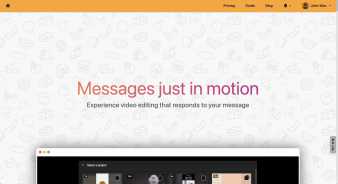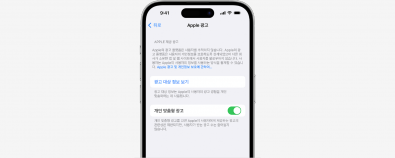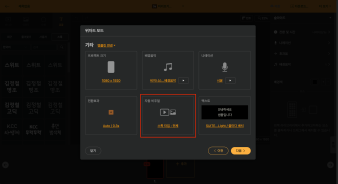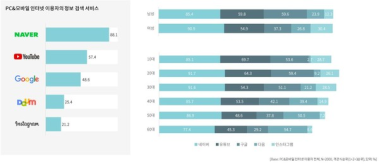
Junwoo
2023-11-02 12:23:56
University
Choosing the Right Video Editing Program for You
🎓
Three Common Traits of Small Businesses Excelling at YouTube Channel Management
As short-form video content takes the spotlight, many companies are diving into platforms like YouTube Shorts and Instagram Reels. 📹Over the past year, we've en...

🎓
Mastering the "cref" parameter for MidJourney Character Consistency (feat. Creating a Spooky YouTube Short)
Great news for all MidJourney users! A new consistency parameter has been added to help maintain the same facial features across various poses and expressions o...

🎓
Effective Content Marketing Strategies for B2B Companies
The Changing Trends of B2B Marketing: Back to BasicRecently, content marketing is regaining attention in the B2B marketing industry. Initially, B2B companies ha...

🎓
Law Firms' Content Marketing Strategies: From Blogging to Short-Form Video Evolution
Getting StartedIn the legal services market, content marketing through blogs has traditionally been highly relied upon. It emphasizes professionalism and provid...

🎓
Creating Various Icon Styles with Midjourney (Prompts Revealed!)
Creating Transparent Icons with Midjourney?Let's cut to the chase: Services based on stable diffusion models like Midjourney are unable to create images with tr...

🎓
Choosing the Right Video Editing Program for You
Starting offHow often do you watch YouTube these days? We live in a time where all communication hinges on video content. Can you imagine that way back in 2005 ...

🎓
Exploring the Power of ‘Content Marketing’ and How to Do It without Advertising Expenses
There once was a time when mounting an advertisement on Facebook guaranteed crazy sales with a staggering Return on Ad Spend (ROAS). With the advent of the pand...

🎓
The Perfect Blend of chatGPT and VideoStew – A Single Step Solution from Planning to Editing YouTube Shorts
The Complexity of Video CreationAccording to a 2021 survey on the state of the one-person media industry, it takes an average of 12 hours for a solo creator to ...

Starting off
How often do you watch YouTube these days? We live in a time where all communication hinges on video content. Can you imagine that way back in 2005 when YouTube was launched, we envisioned such a future?
From content for personal entertainment to content directly tied to a company's revenue, interest in video content is growing across all fields. Naturally, the demand to create such videos ourselves is also increasing, as is the interest in video editing technology.
< An>
Where there is demand, supply inevitably follows. A myriad of video editing programs are continually being launched to meet the video editing needs of the public.
In the past, video editing was synonymous with “Premiere”, but now there is no need for professional tools like this for content created for YouTube. That’s why lightweight solutions, geared towards "special" purposes like splitting chicken, are gaining popularity. (
Just like you don’t need a butcher knife to cut chicken.)What type of content will you create?
If you've shot an independent film and need to edit it, obviously, you'll require a professional video editing tool like "Premiere". To facilitate free editing, you may even need something like "Vegas".
But what about the videos that frequently show up on YouTube? In our opinion, professional editing tools might be overkill.
< Invest>
If you have a clear idea of the format you want to create, it's much more efficient to find a video editor that can quickly implement it. Our focus should be on honing storytelling skills to make our stories "sell well"; we certainly cannot lose sight of this important aspect due to the means of editing.
The evolution of video editing programs
In this post, we'd like to examine video editing software optimized for specific format editing. First, we want to briefly look at the evolution of video editing programs.
Timeline-based video editors
The most common method of video editing is the timeline-based editor UI. Did you know that video editing originally started from cutting and splicing filmed footage with a scissor? When all information became digitalized, what emerged was the NLE (Non-Linear Editing) method. With separate video and sound and even multilayer editing for videos, it became the standard UI for video editing.
As we mentioned earlier, professional tools like Premiere and Final Cut stick to this timeline-based UI. While it may not be the most beginner-friendly UI, it offers high editing flexibility.
Lately, several web editing software models have been launched which implement a lightweight timeline UI with only necessary functions. Personal opinion, but Clipchamp provides a sleek and smooth experience among these solutions.
I thought anyone would declare it well-made; but the next thing I knew, it had been acquired by Microsoft.Template-based video editors
In truth, web-based video editors have been around for more than a couple of years. Template-based video editing solutions have been mainstream since before 2010.
Template-based editing tools provide beautifully designed projects, and users only have to swap out messages to use them.
Because user editing is dramatically reduced, it emerged as a mainstream method. As seen in the image above, videos, logos, messages, call-to-actions (CTAs) (as seen in the image above with "Shop now!") can be easily prepared.
All users have to do is replace the text or swap it out for a different video – it really is that simple.
In 2014, a similar template-based video service was launched in Korea, which gathered a lot of attention. However, the popularity of these swap-out editing services gradually dwindled, and it's now hard to call them mainstream video editing tools.
That's because users who don't have an idea for a video start by using these template solutions, but the moment they see the result, a desire to customize starts to emerge.
"Can I add another logo?", "Can I mention one more feature of our service?"
From simple editing desires, ideas like "It'd be great if our product image showed first, followed by that text," start to pour out.
Unfortunately, these template services had a hard time breaking out of their rigid frames. Even the number of characters or lines in texts were limited. If those limitations were crossed, the design would break, or rendering wouldn't happen. (
Though nowadays extant template-based services are a bit more sophisticated, allowing for length adjustment in certain areas and more freedom in text length.)For this reason, these template services pivoted towards bulk creation. Bulk creation means programmatically creating multiple videos at once. I have some sceptical views on this bulk creation, but we'll talk more about this another time.
Slide-based video editors
In fact, slide-based video editing solutions have been around since before template-based editing tools became popular. The very first was Animoto in the United States, in 2006. (
And this service is still thriving.)This service launched with an innovative concept of video editing perceived as building with Lego bricks. There's no timeline in this service. Instead, it functions on a "block" unit.
"Blocks" represent one scene. The significance of this method is that videos we make don't have to be divided into seconds. Even if editing is approximated, a good enough result can be received. Services that automatically generate subtitles by sentences, like Vrew or Descript share the same principle. They use one sentence or paragraph as the minimum unit of editing.
<img class="preivew centercenter border rounded type-image svelte-16r8uw0" src="https://cdn.VideoStew.com/files/get/fe8a952ac-7j1t9ugws"